5
julioYou'll Be Unable To Guess Condensation In Windows's Tricks
Understanding Condensation in Windows: Causes, Effects, and Solutions
Condensation on windows is a common phenomenon encountered in lots of homes and structures. This incident can cause different issues, consisting of water damage, mold development, and weakening window frames. Comprehending the reasons for condensation and how to handle it is important for preserving healthy indoor air quality and prolonging the lifespan of windows. This post digs into the science behind condensation, its results, and reliable techniques for avoidance and management.

What is Condensation?
Condensation In Windows happens when water vapor in the air cools and becomes liquid water. This process is influenced by temperature and humidity levels in the environment. When warm air, which can hold more moisture, enters into contact with a cooler surface area (like a window glass), it cools off. If the air's temperature level drops listed below its humidity, the moisture condenses on the glass, forming droplets of water.
Table: Key Factors Contributing to Window Condensation
| Element | Description |
|---|---|
| Temperature | Cooler surfaces cause increased condensation. |
| Humidity | Greater indoor humidity levels increase moisture potential. |
| Air Circulation | Poor circulation can trigger localized areas of cool air. |
| Window Type | Double or triple-glazed windows are less susceptible to condensation. |
| Weather condition Conditions | External weather affects indoor temperature level and humidity. |
Causes of Condensation in Windows
Numerous aspects contribute to condensation forming on windows. The main causes consist of:
High Indoor Humidity: Cooking, showering, drying clothes, and even breathing add to indoor humidity levels. Excessive moisture in little, inadequately ventilated areas is a prime condition for condensation.
Temperature level Difference: When warm air inside a room meets the cold surface of a window, condensation can happen. This is particularly apparent throughout winter months when indoor temperatures may be significantly warmer than outside temperatures.
Air Tightness: Modern homes are frequently constructed with a focus on energy effectiveness, resulting in tight building. While this prevents heat loss, it likewise restricts airflow and can cause moisture to develop inside.
Insulating Properties of Windows: Older single-pane windows are particularly prone to condensation due to the fact that they lack the insulating homes of modern-day double or triple-glazed windows. This can make them cold adequate to promote condensation during cooler months.
Diagram: How Condensation Forms on Windows
- Warm, damp air increases in the space.
- The warm air cools as it meets the cold glass.
- Humidity condenses into small beads of water on the surface area of the glass.
Impacts of Window Condensation
While condensation is a natural process, it can have damaging impacts if not handled appropriately. Some of these results include:
- Mold Growth: Persistent moisture can lead to mold, which can adversely impact health and require expensive removal.
- Damage to Window Frames: Wood window frames can warp or rot due to extended direct exposure to moisture.
- Peeling Paint and Wallpaper: Excess moisture can damage paint and wallpaper, resulting in peeling and degradation.
- Decreased Visibility: Condensation can impair presence through windows, diminishing the looks of an area.
Handling and Preventing Window Condensation
Managing condensation requires a multi-faceted method. Here are a number of strategies to lessen its incident:

1. Control Indoor Humidity
- Use Exhaust Fans: Installing exhaust fans in kitchens and bathrooms can assist get rid of excess moisture.
- Dehumidifiers: Using a dehumidifier can substantially decrease humidity levels, especially in locations susceptible to moisture.
- Houseplants: Limit the variety of houseplants, as they release moisture into the air.
2. Enhance Air Circulation
- Open Windows: Occasionally opening windows can help promote better air flow and decrease moisture build-up.
- Usage Ceiling Fans: Ceiling fans can assist circulate air and preserve constant temperature throughout a space.
3. Update Windows
- Install Double or Triple-Glazed Windows: These types of windows supply much better insulation, minimizing the temperature level difference between the outside and inside surfaces.
- Apply Window Treatments: Insulating window film or thermal drapes can help maintain indoor temperature level.
4. Insulation
- Insulate Walls and Attics: Proper insulation of walls and attics can assist maintain a more stable indoor temperature, reducing the occurrence of condensation.
Table: Prevention Strategies for Window Condensation
| Strategy | Description |
|---|---|
| Humidity Control | Use exhaust fans, dehumidifiers, and limit houseplants. |
| Air Circulation | Open windows and use ceiling fans to improve air flow. |
| Window Upgrade | Think about installing double or triple-glazed windows. |
| Insulation | Ensure proper insulation in walls and attics. |
Condensation on windows is a natural occurrence that can posture considerable challenges if not resolved successfully. By comprehending its domino effects and carrying out proactive strategies, homeowners can minimize the risks associated with window condensation. Preserving appropriate humidity levels, enhancing air flow, updating windows, and making sure correct insulation are all important jobs in preserving not only the health of indoor environments but likewise the longevity of windows.
FAQs About Window Condensation
Q1: Is condensation on windows an indication of a severe problem?A: Not always. Condensation can take place for different factors, but relentless moisture can cause bigger concerns like mold, so it's important to handle it successfully. Q2: How can I inform if my windows are the reason for indoor humidity?A: If
condensation types mostly on your windows and no other surfaces, it's
typically a sign that your windows are considerably cooler than the air inside your home. Q3: Will opening windows in winter season help in reducing condensation?A: Yes, opening windows periodically can help allow damp air to leave, decreasing the general humidity levels in the home. In conclusion, while condensation on windows can be a frustrating issue for homeowners, understanding the science behind it makes it possible for much better management and prevention techniques. By embracing thoughtful practices, individuals can produce a more comfortable living environment while likewise protecting their homes.


Reseñas